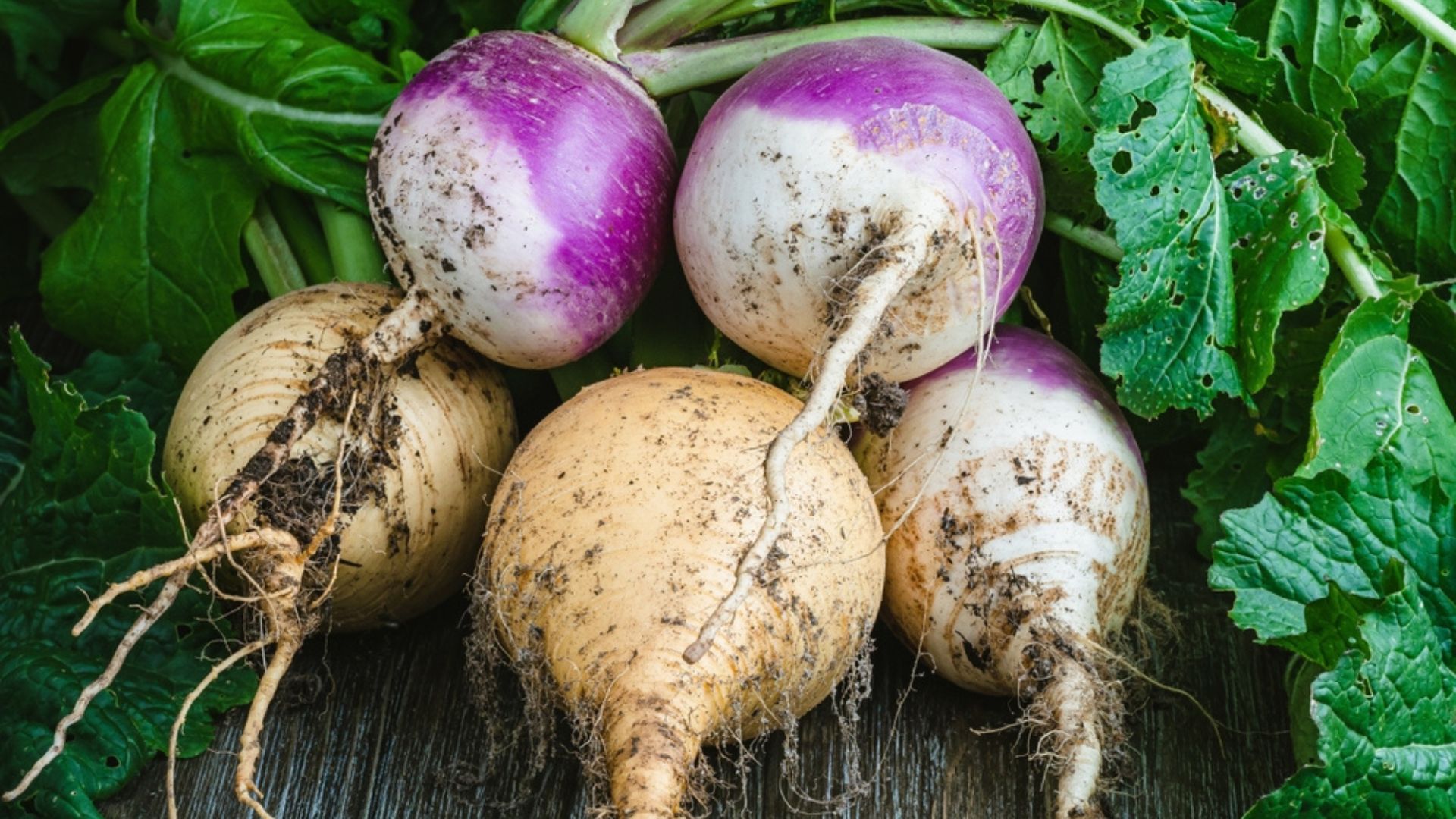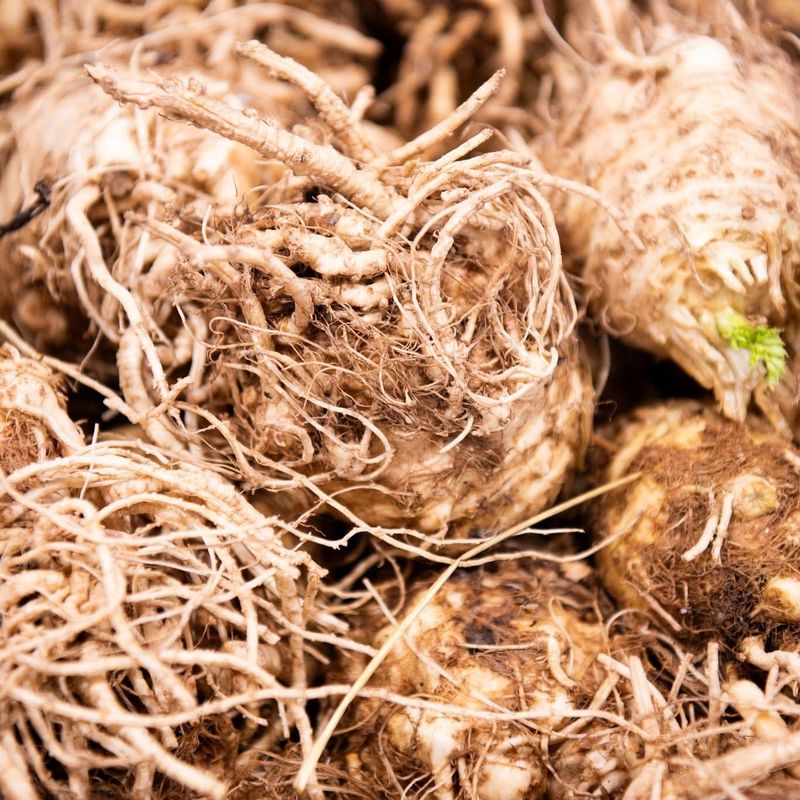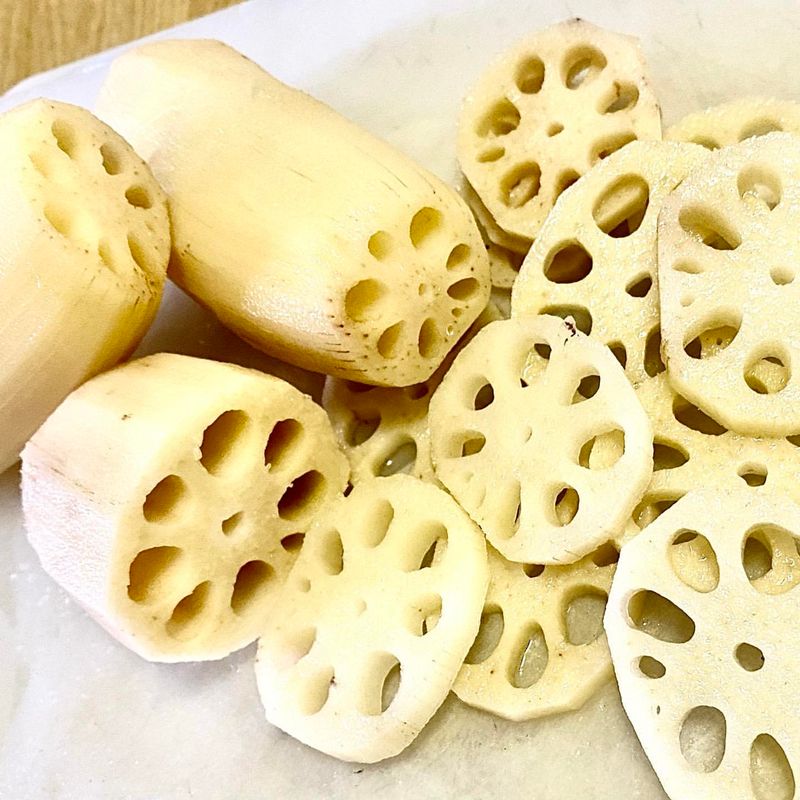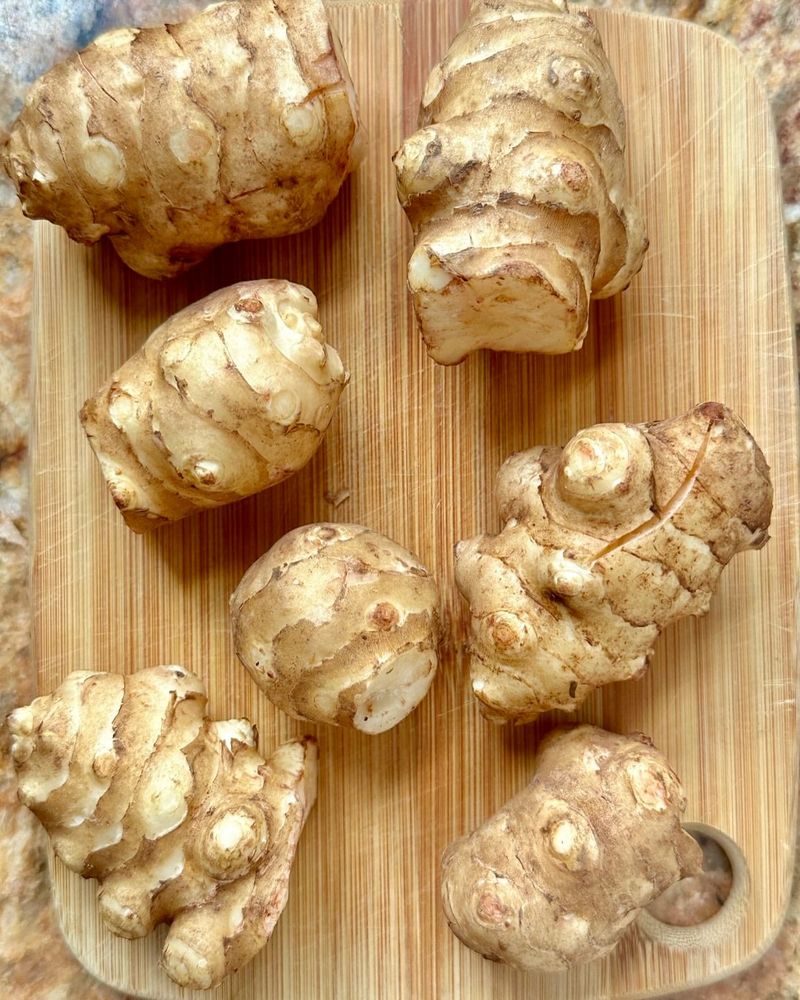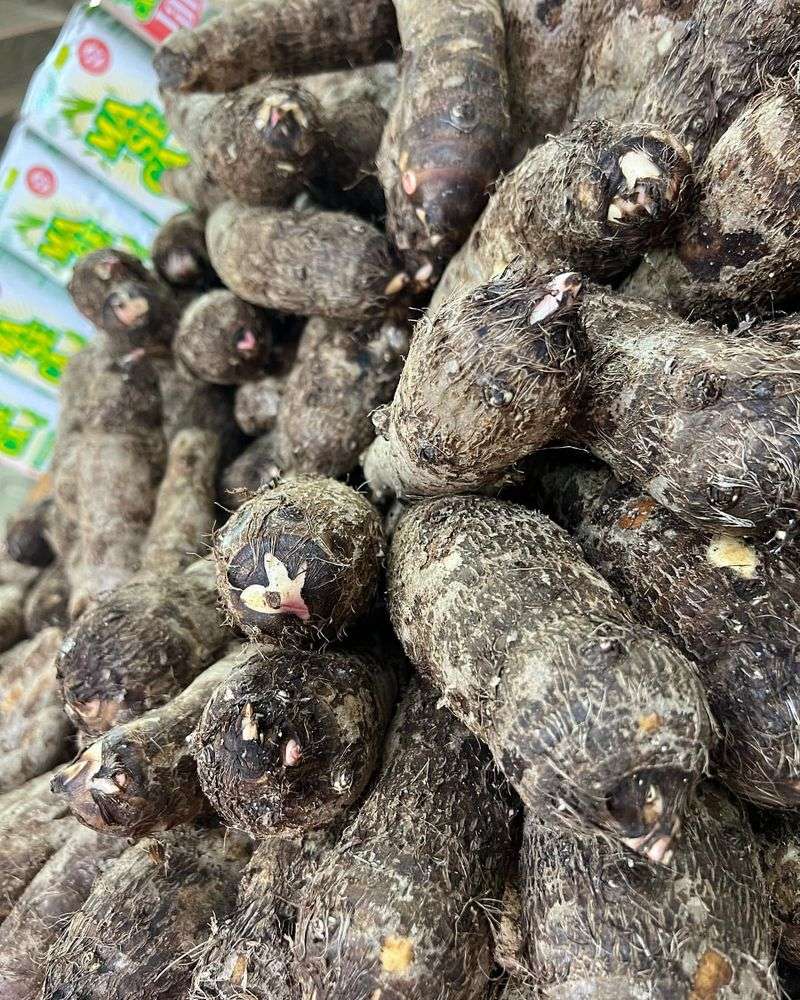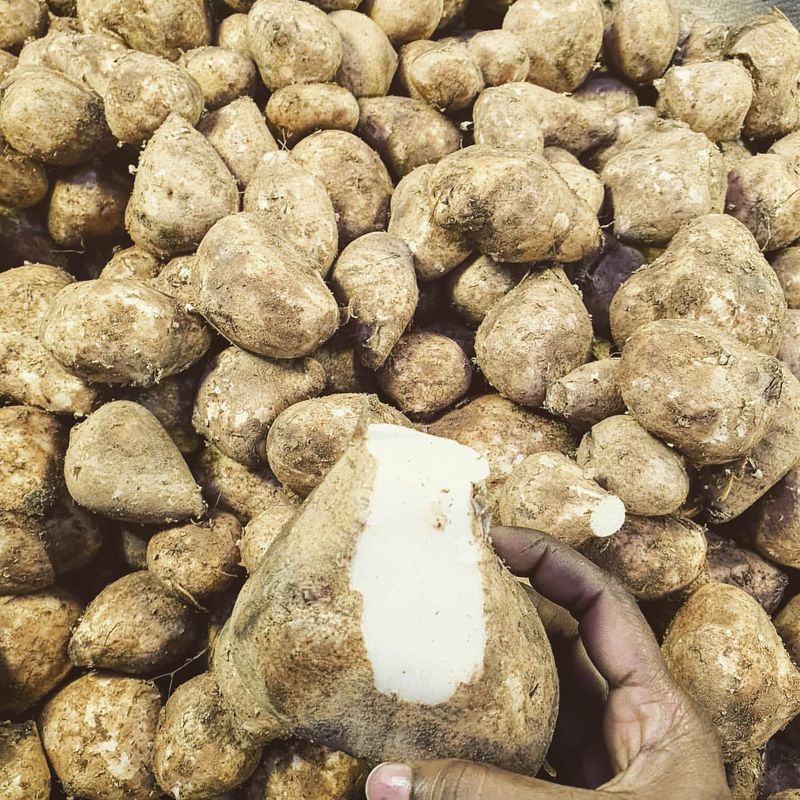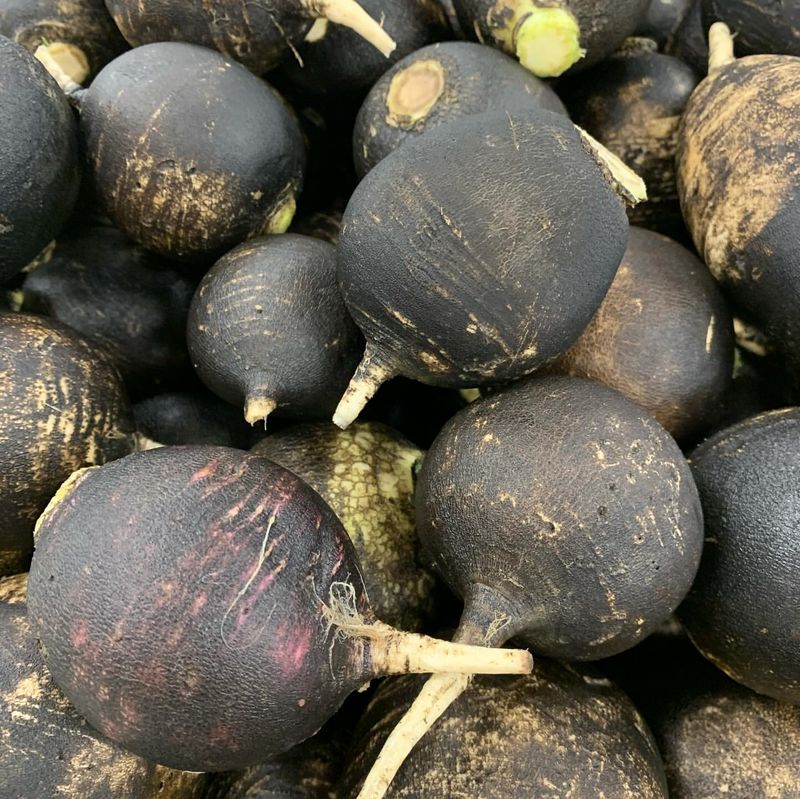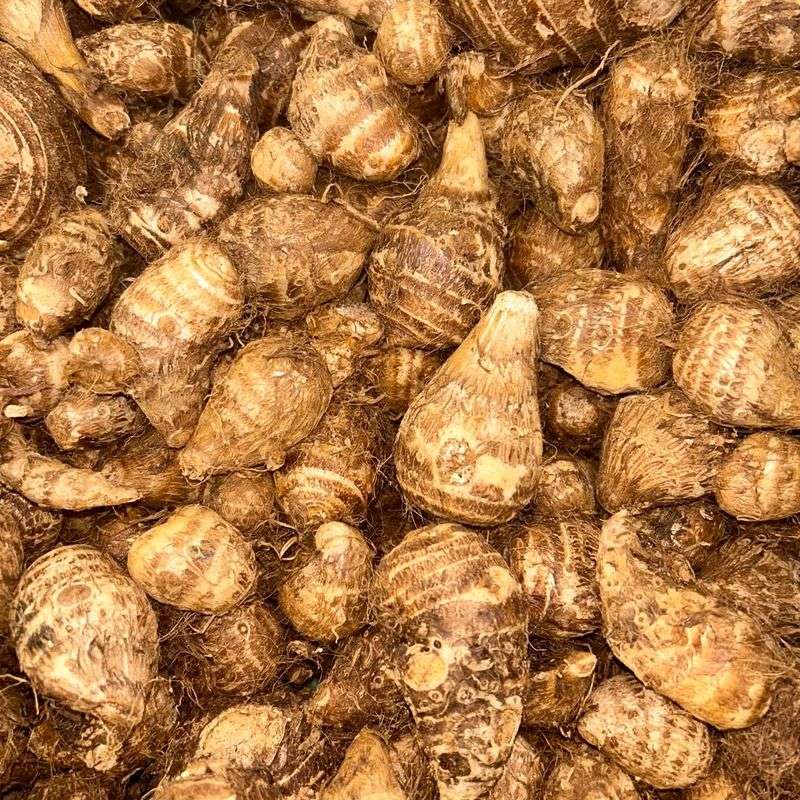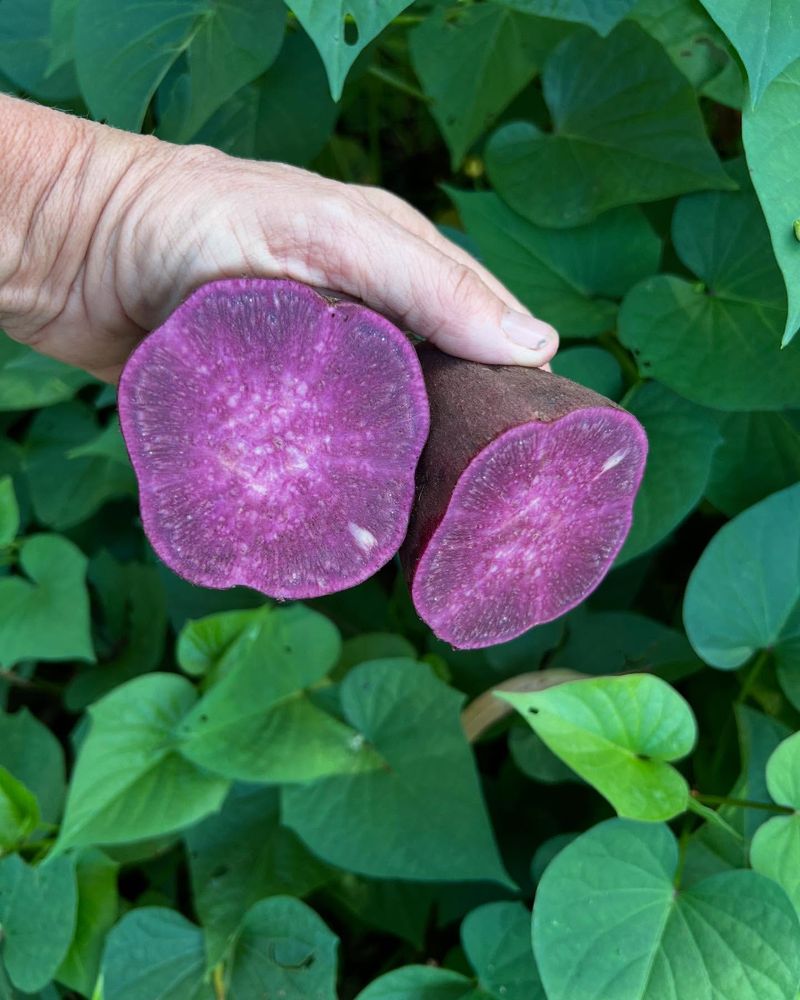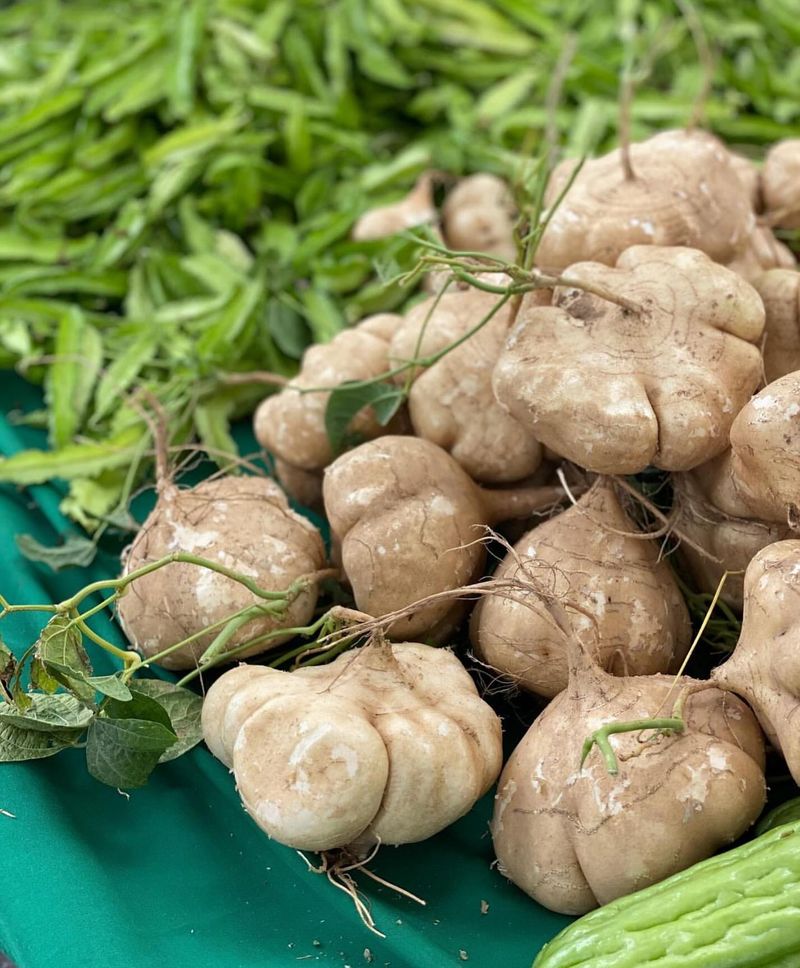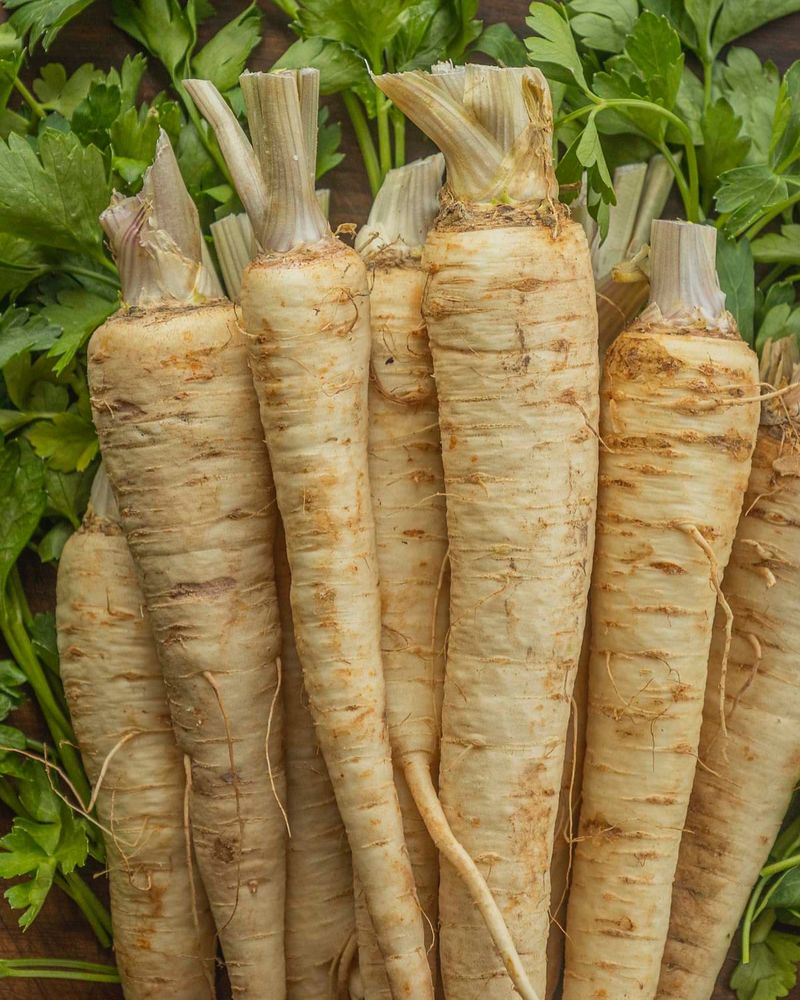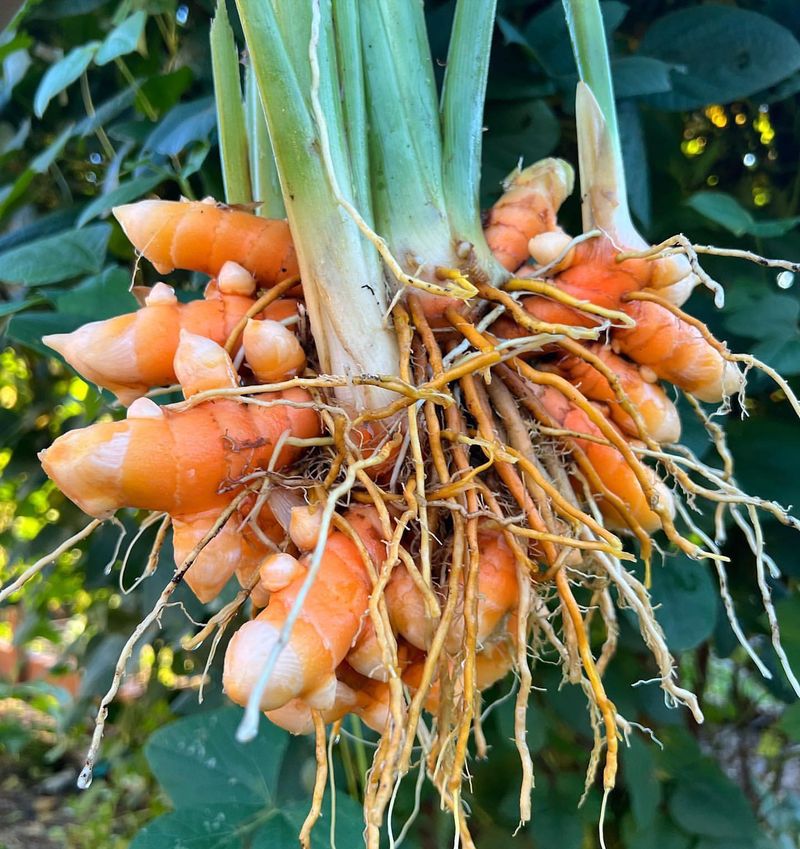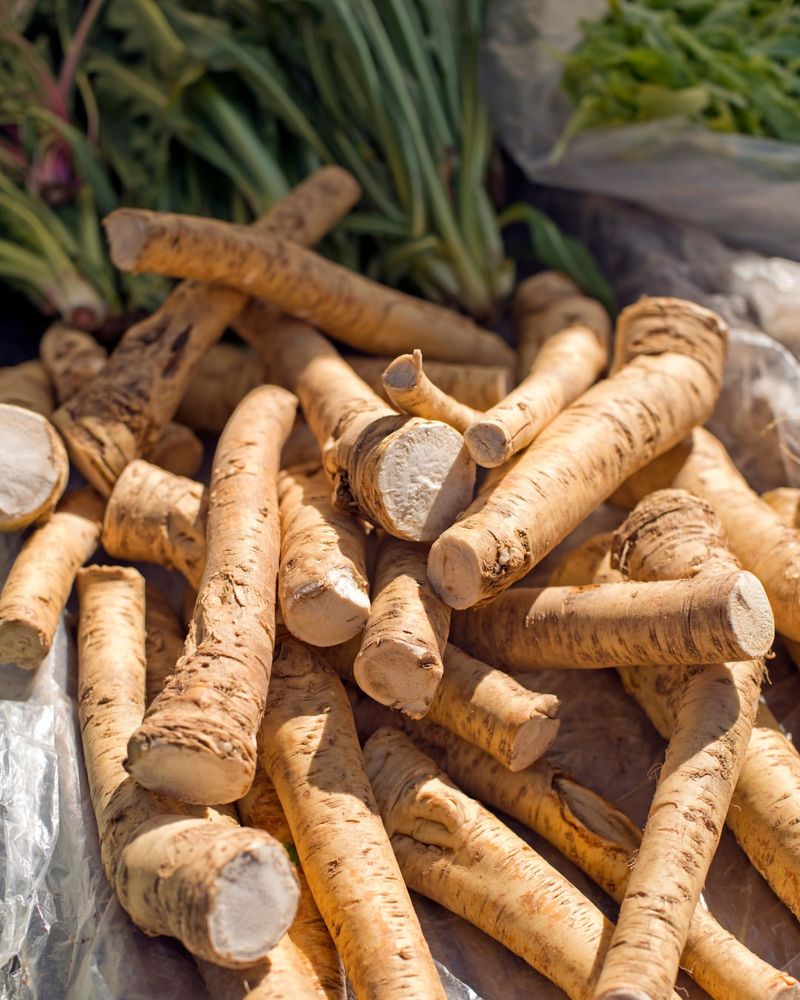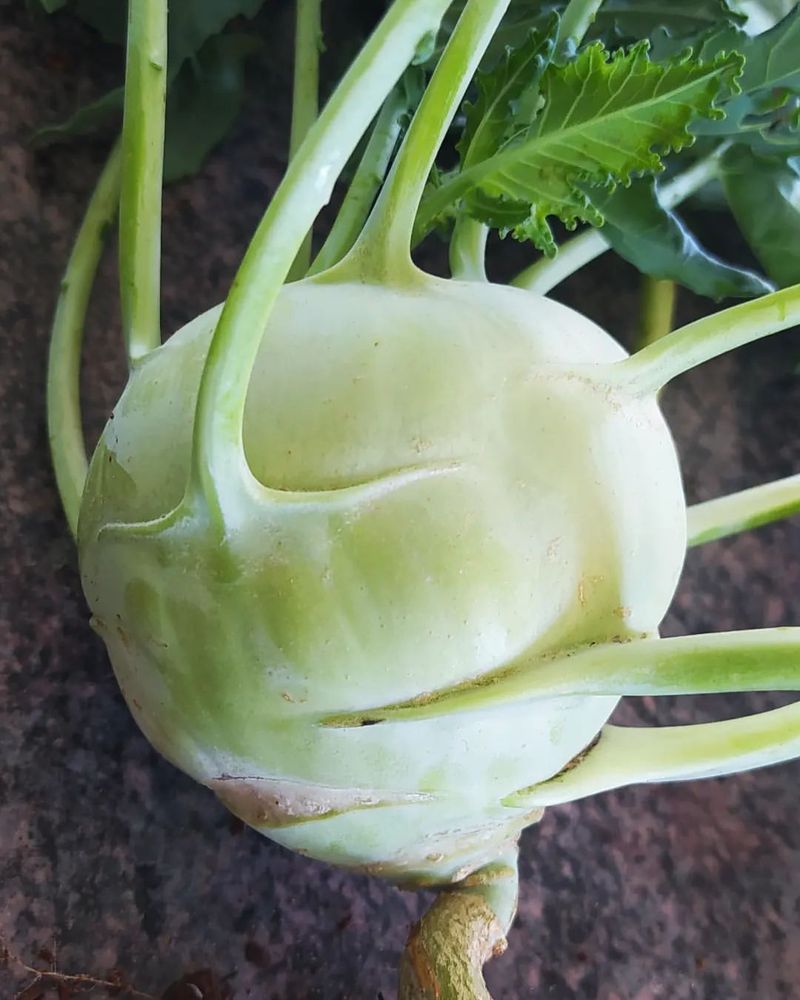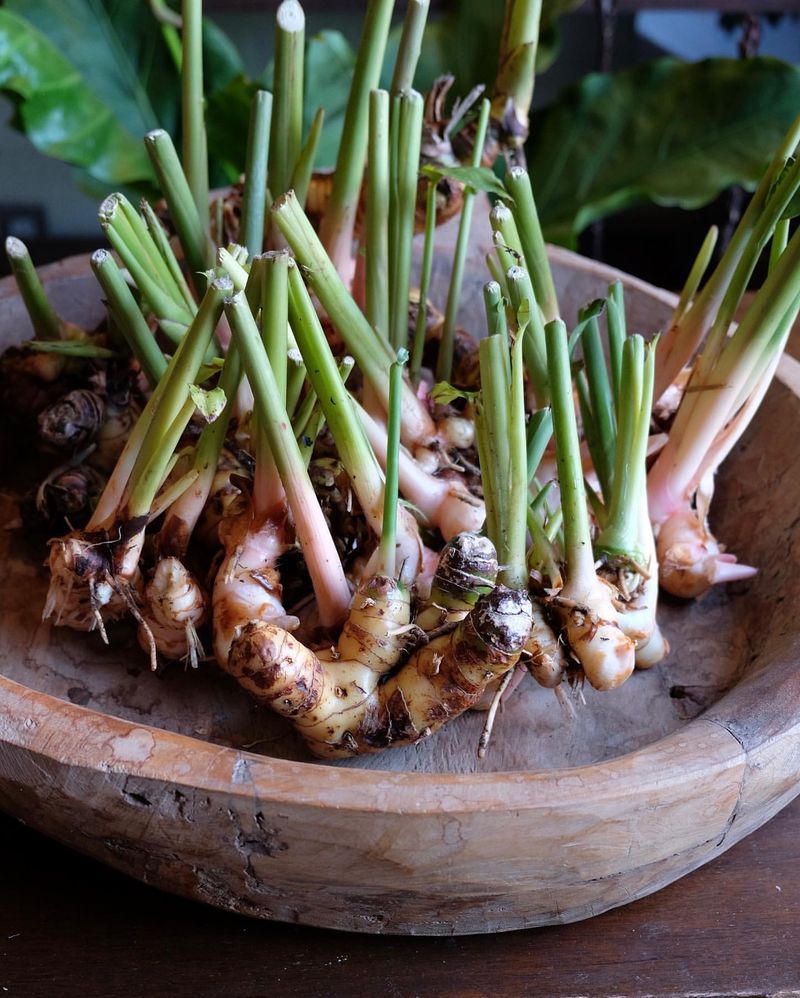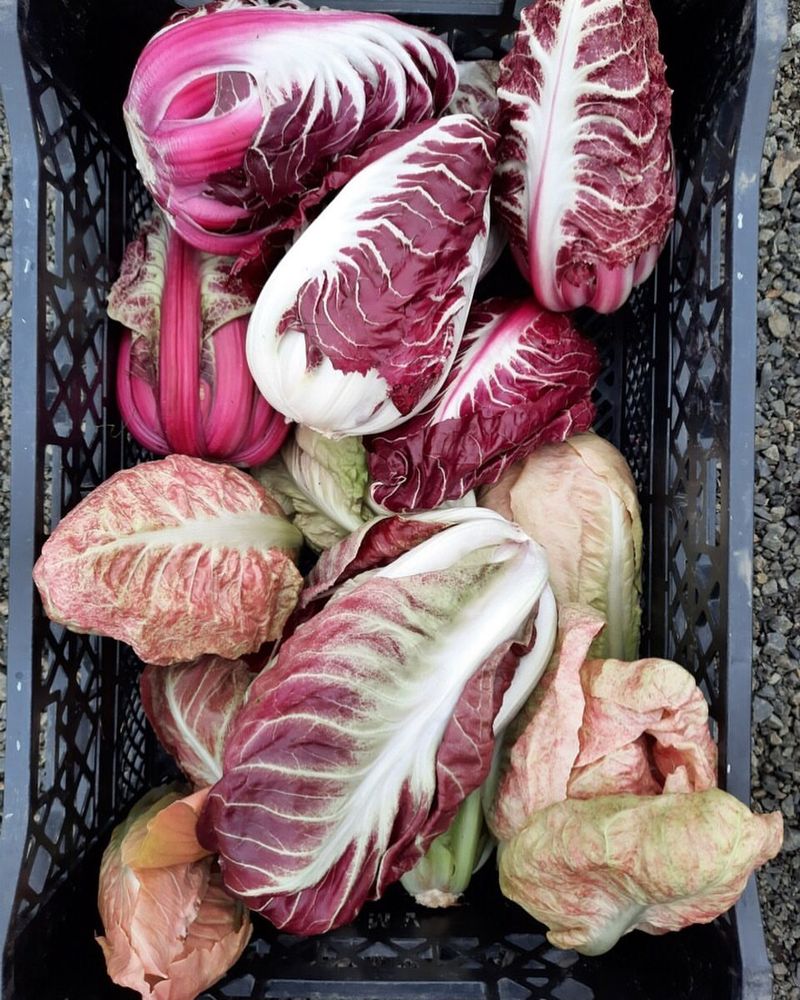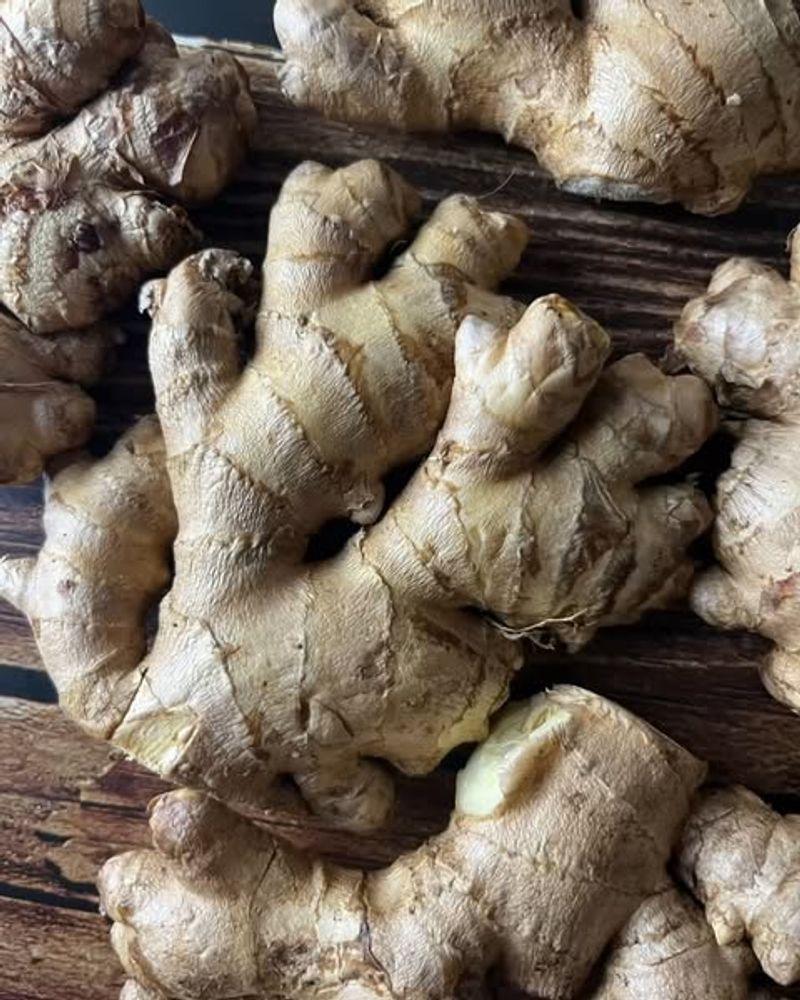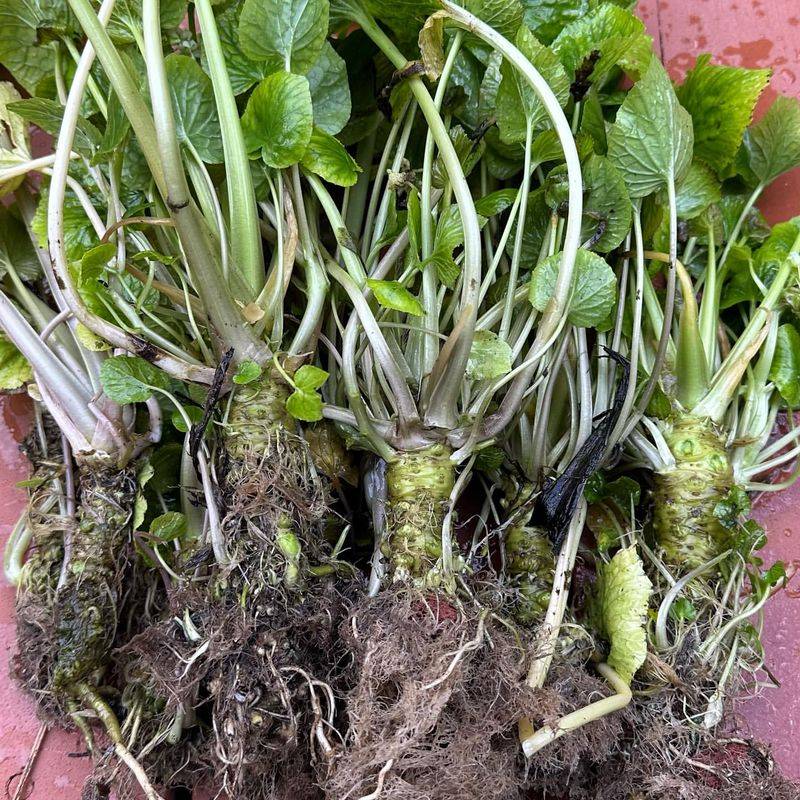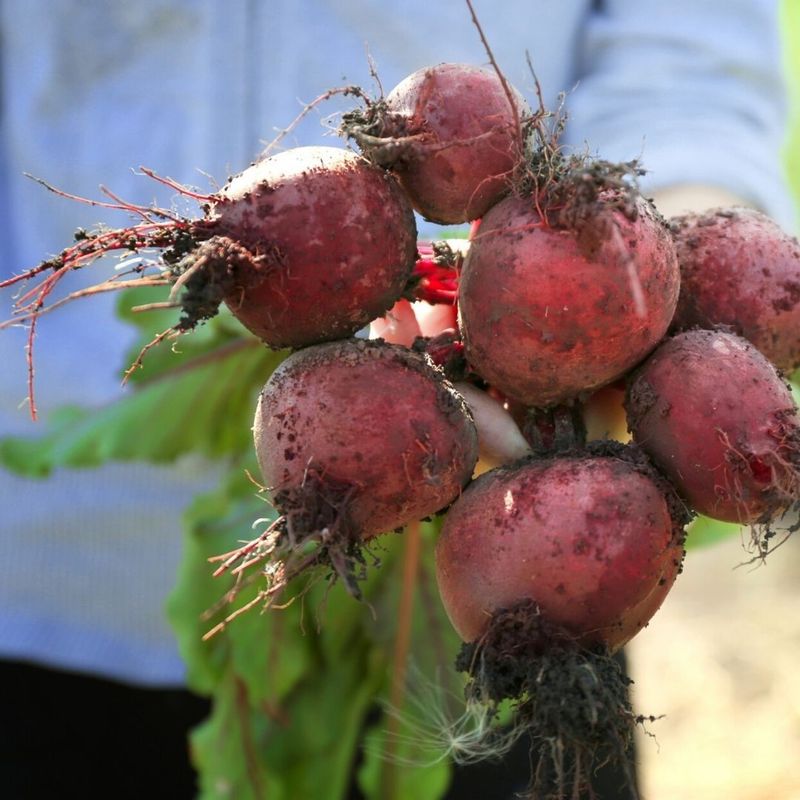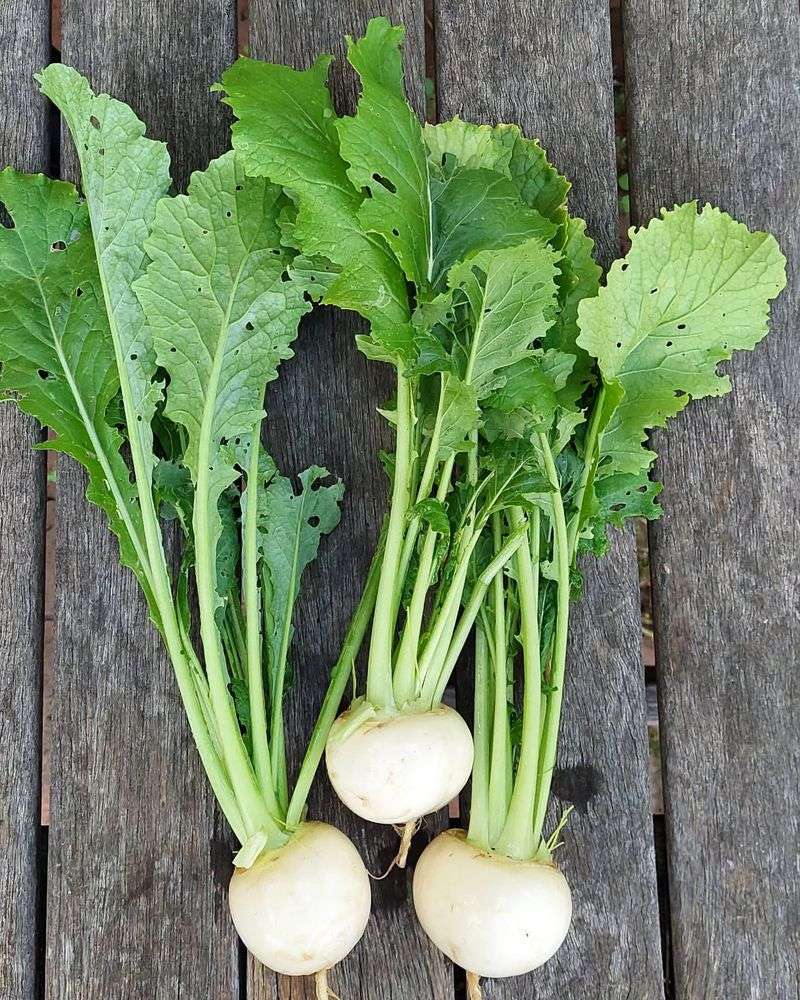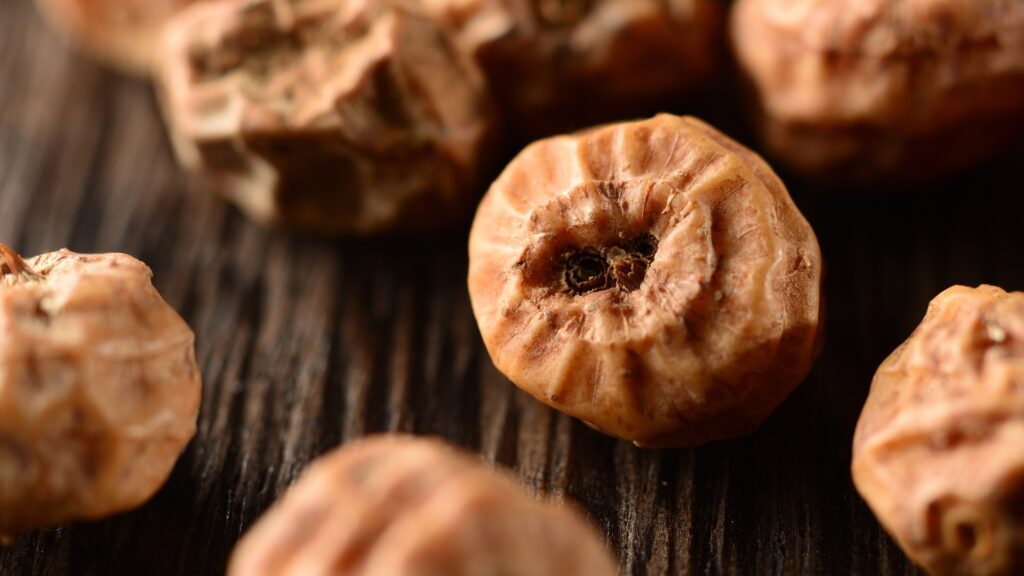Exploring the world of root vegetables can uncover a treasure trove of flavors and nutrients. Root vegetables are not only versatile and delicious, but they also offer an array of health benefits.
In this blog post, we will introduce you to 30 unusual root vegetables that you might not have considered before, each offering something unique to your culinary repertoire. From exotic flavors to unexpected textures, these root vegetables are sure to surprise and delight.
1. Celeriac
Often overlooked in the produce aisle, celeriac brings a subtle, earthy flavor to any dish. Its rough, brown exterior hides a creamy white flesh that is both versatile and delicious.
Whether mashed, roasted, or pureed, celeriac’s unique taste can enhance a variety of dishes. Try substituting it for potatoes in your favorite recipes.
Rich in vitamins and minerals, celeriac offers health benefits alongside its culinary uses. Including it in your diet can help boost your immune system and improve digestion.
2. Salsify
An intriguing vegetable often referred to as the “oyster plant,” salsify has a delicate flavor reminiscent of oysters. Its appearance may be humble, but it offers a delightful surprise.
Peel away its thin outer layer to reveal a creamy interior that becomes tender and flavorful when cooked. Salsify can be boiled, mashed, or added to soups and stews.
Beyond its taste, salsify is rich in fiber and vitamins, making it a nutritious addition to any meal. It’s a fantastic way to diversify your vegetable intake.
3. Oca
Unfamiliar to many, oca is a delightful root vegetable that brings a burst of color to the plate. These small, vibrant tubers are native to the Andes.
Their tangy flavor and crisp texture make them a perfect addition to salads or stir-fries. Oca can be eaten raw or cooked, providing versatility in the kitchen.
Besides their culinary appeal, oca tubers are a good source of carbohydrates and vitamin C. They offer a unique twist on traditional root vegetables.
4. Lotus Root
With an appearance that captivates, lotus root is not only beautiful but also delicious. Its crunchy texture and mild, sweet flavor make it a favorite in many Asian cuisines.
Sliced thin, it can be used in stir-fries, soups, or as a crispy snack. The intricate pattern adds visual appeal to any dish it graces.
Lotus root is packed with nutrients, including vitamins and minerals, supporting overall health. It’s a versatile ingredient that can be both decorative and nutritious in your meals.
5. Sunchoke
Known also as Jerusalem artichokes, sunchokes are an underappreciated root vegetable with a nutty flavor. Their appearance might be unassuming, but they hold a delightful taste.
Roast them to bring out their natural sweetness or slice them raw into salads for a crunchy texture. Sunchokes are a versatile ingredient.
Rich in inulin, a type of fiber, sunchokes can aid in digestion and support healthy gut bacteria. They’re a wonderful addition to a balanced diet.
6. Yacon
A sweet delight, yacon stands out among root vegetables with its crisp, juicy texture. Resembling a sweet potato in appearance, it offers a refreshing taste.
Peel and enjoy raw slices for a hydrating snack or add it to salads for a burst of sweetness. Yacon can also be cooked, enhancing its natural sugars.
This root is known for low-calorie content and is rich in prebiotics, promoting digestive health. Yacon is a unique find for those seeking flavorful and healthy options.
7. Malanga
Diving into the tropics brings us malanga, a root vegetable cherished for its nutty flavor and creamy texture. This tuber is a staple in Caribbean cuisine.
Cooked similarly to potatoes, malanga is perfect for soups, stews, or as a mashed side dish. Its versatility makes it a favorite in many households.
Packed with dietary fiber and essential nutrients, malanga supports digestive health and offers a nutritious alternative to common root vegetables.
8. Yam Bean
Introducing a lesser-known root, the yam bean, which captivates with its crisp, juicy texture. Often compared to jicama, it’s a refreshing addition to meals.
Slice it thin for a crunchy salad topping or enjoy it raw as a snack. Yam bean’s sweetness pairs well with savory dishes.
Rich in vitamin C and dietary fiber, it offers both taste and nutrition. This root is an excellent way to diversify your vegetable selection.
9. Black Radish
Breaking the norm with its striking appearance, black radish offers a peppery punch. Its dark exterior contrasts with the crisp, white flesh inside.
Ideal for salads or as a garnish, black radish can be eaten raw or cooked. Its bold flavor adds depth to any dish.
Beyond taste, it boasts health benefits like aiding digestion and supporting liver function. Black radish is a dynamic addition to your kitchen.
10. Daikon
Stepping into the world of daikon reveals a versatile root with a mild flavor. Resembling a large white carrot, it’s a staple in Asian dishes.
Grate it into salads, pickle it, or add to soups for a refreshing taste. Daikon’s adaptability makes it a kitchen essential.
This root is low in calories but high in nutrients, supporting weight management and digestion. Daikon offers a balance of flavor and health.
11. Ulluco
Often overshadowed, ulluco is a vibrant and eye-catching root vegetable. These small, colorful tubers hail from the Andes, offering a unique flair.
With a waxy texture, ulluco is great for salads or as a cooked side dish. Their mild, earthy flavor complements many recipes.
Rich in protein and fiber, ulluco provides essential nutrients and can enhance your diet with both taste and health benefits.
12. Taro
Unveiling the versatility of taro, a root vegetable revered in many cultures. Its starchy, purple-speckled flesh makes it ideal for a variety of dishes.
Boil it, mash it, or fry it for a flavorful treat. Taro’s unique texture and taste are appreciated worldwide.
Beyond taste, taro is a great source of carbohydrates and fiber, supporting energy levels and digestive health. It’s a staple worth exploring.
13. Crosne
Diving into delicacies leads to crosne, a French root vegetable with a crunchy texture. These small tubers resemble white caterpillars.
Saute them for a nutty flavor or eat them raw for a crisp snack. Crosne’s unique shape adds a fun element to dishes.
Packed with fiber and vitamins, it supports digestion and overall health. Crosne is a delightful way to experiment in the kitchen.
14. Purple Yam
An enchanting addition, purple yam stands out with its vibrant color and sweet flavor. Known for its striking appearance, it’s a culinary gem.
Use it in desserts, soups, or even as a mashed side dish. Purple yam’s versatility and taste make it beloved in many cuisines.
Rich in antioxidants and vitamins, it supports immune health and offers a nutritious option for those seeking variety.
15. Burdock Root
A surprising find, burdock root captivates with its earthy flavor and crunchy texture. Often used in Asian cooking, it’s a versatile ingredient.
Slice it into stir-fries or soups for added depth. Burdock’s unique taste enhances many dishes.
Beyond flavor, it’s rich in antioxidants and fiber, supporting digestion and detoxification. Burdock root is a great addition to a healthy lifestyle.
16. Jicama
Joining the lineup, jicama is celebrated for its crisp texture and sweet, nutty flavor. Often enjoyed raw, it’s a refreshing snack.
Add it to salads or stir-fries for a crunchy contrast. Jicama’s versatility makes it a staple in many kitchens.
Low in calories and high in fiber, it supports weight management and digestion. Jicama is a delightful option for healthy eating.
17. Parsnip
Introducing a root with a rich history, parsnip offers a sweet, nutty flavor. Often overshadowed by carrots, it deserves a spot on your plate.
Roast them to bring out their natural sweetness or mash them for a comforting side dish. Parsnip’s versatility is unmatched.
Rich in vitamins and minerals, it supports overall health and provides a nutritious alternative to potatoes.
18. Turmeric
Bringing a vibrant hue, turmeric is renowned for its health benefits and earthy flavor. This root is a staple in many spice cabinets.
Grate it into dishes for a burst of color and taste. Turmeric’s anti-inflammatory properties make it a valuable ingredient.
Rich in antioxidants, it supports overall well-being and adds depth to culinary creations. Turmeric is a must-have for health-conscious cooks.
19. Horseradish
Adding a fiery kick, horseradish is known for its pungent flavor. This root is a popular condiment for those seeking bold tastes.
Grate it fresh for a spicy addition to sauces or meats. Horseradish’s intensity can elevate any dish.
Beyond flavor, it’s rich in compounds that support respiratory health. Horseradish is perfect for those who love strong flavors.
20. Cassava
Exploring tropical flavors, cassava is a starchy root vegetable with a mild taste. Often used to make flour, it’s a staple in many cultures.
Boil it or fry it for a crunchy snack. Cassava’s versatility makes it a valuable ingredient in various recipes.
Rich in carbohydrates, it provides energy and supports dietary needs. Cassava is a fundamental part of many traditional diets.
21. Kohlrabi
Stepping into the garden reveals kohlrabi, a root vegetable with a crisp texture. Often compared to a turnip, it’s a unique addition to meals.
Slice it thin for salads or roast it for a savory side. Kohlrabi’s mild flavor complements many dishes.
Low in calories but high in nutrients, it supports a healthy diet and offers variety to traditional root vegetables.
22. Galangal
Introducing galangal, a root that offers a spicy kick and citrusy aroma. Often used in Thai cuisine, it’s a flavorful addition.
Slice it into soups or curries for a burst of taste. Galangal’s unique flavor profile sets it apart from ginger.
Rich in antioxidants and anti-inflammatory properties, it supports overall health. Galangal is a must-try for adventurous cooks.
23. Radicchio Root
Discovering a lesser-known root, radicchio root offers a bitter, peppery taste. Its appearance is striking with a red-tipped end.
Use it in salads or as a garnish for a bold flavor. Radicchio root’s bitterness can add depth to your meals.
Rich in vitamins and minerals, it supports overall health and provides a unique twist to traditional root vegetables.
24. Sweet Potato
Adding a sweet touch, sweet potatoes are beloved for their vibrant color and flavor. Known for their versatility, they’re a staple in many diets.
Bake them, mash them, or fry them for a delicious treat. Sweet potatoes offer a balance of taste and nutrition.
Rich in vitamins A and C, they support immune health and provide energy. Sweet potatoes are a nutritious choice for any meal.
25. Ginger
Bringing warmth, ginger is celebrated for its spicy flavor and health benefits. This root is a staple in many kitchens.
Grate it into teas or dishes for a zesty addition. Ginger’s anti-inflammatory properties make it a popular choice.
Beyond flavor, it’s rich in compounds that support digestion and immunity. Ginger is a versatile root with much to offer.
26. Wasabi
Adding a spicy flair, wasabi is renowned for its intense heat. Often served with sushi, it offers a unique taste experience.
Grate it fresh for a fiery condiment. Wasabi’s bold flavor can enhance many dishes.
Beyond taste, it’s known for antibacterial properties. Wasabi is a must-try for those seeking adventurous flavors.
27. Beetroot
Showcasing its vibrant color, beetroot is beloved for its earthy flavor and health benefits. Often used in salads, it’s a versatile root.
Roast it or pickle it for a flavorful addition to meals. Beetroot’s sweet taste and texture make it a culinary favorite.
Rich in vitamins and antioxidants, it supports overall health and adds color to your plate. Beetroot is a nutritious choice for any diet.
28. Turnip
Exploring traditional flavors, turnips offer a mild, peppery taste. Often used in stews, they’re a hearty addition to meals.
Boil them or mash them for a comforting side dish. Turnips provide a balance of flavor and nutrition.
Rich in vitamins and minerals, they support overall health and offer a classic taste. Turnips are a wonderful root vegetable to include in your diet.
29. Chufa (Tiger Nut)
Unveiling an ancient superfood, chufa—also known as tiger nut—is a small, wrinkled tuber with a naturally sweet, nutty flavor. Despite its name, it’s not a nut at all but a root vegetable.
Enjoy it raw for a chewy snack, blend it into smoothies, or use it to make traditional horchata. Chufa’s versatility makes it a hidden gem in healthy eating.
Rich in resistant starch and fiber, chufa supports digestion and sustained energy. This nutrient-dense root is perfect for those exploring wholesome, ancient foods.
30. Skirret
A blast from the past, skirret is a lesser-known root once favored in medieval cuisine. With multiple slender roots and a subtly sweet, aromatic flavor, it’s making a quiet comeback.
Boil or roast skirret for a dish reminiscent of parsnip with hints of pepper and spice. Its tender texture and flavor make it ideal for soups or purees.
High in fiber and low in calories, skirret supports gut health and offers a unique twist on root vegetable staples. It’s a charming addition for those who love forgotten flavors.

